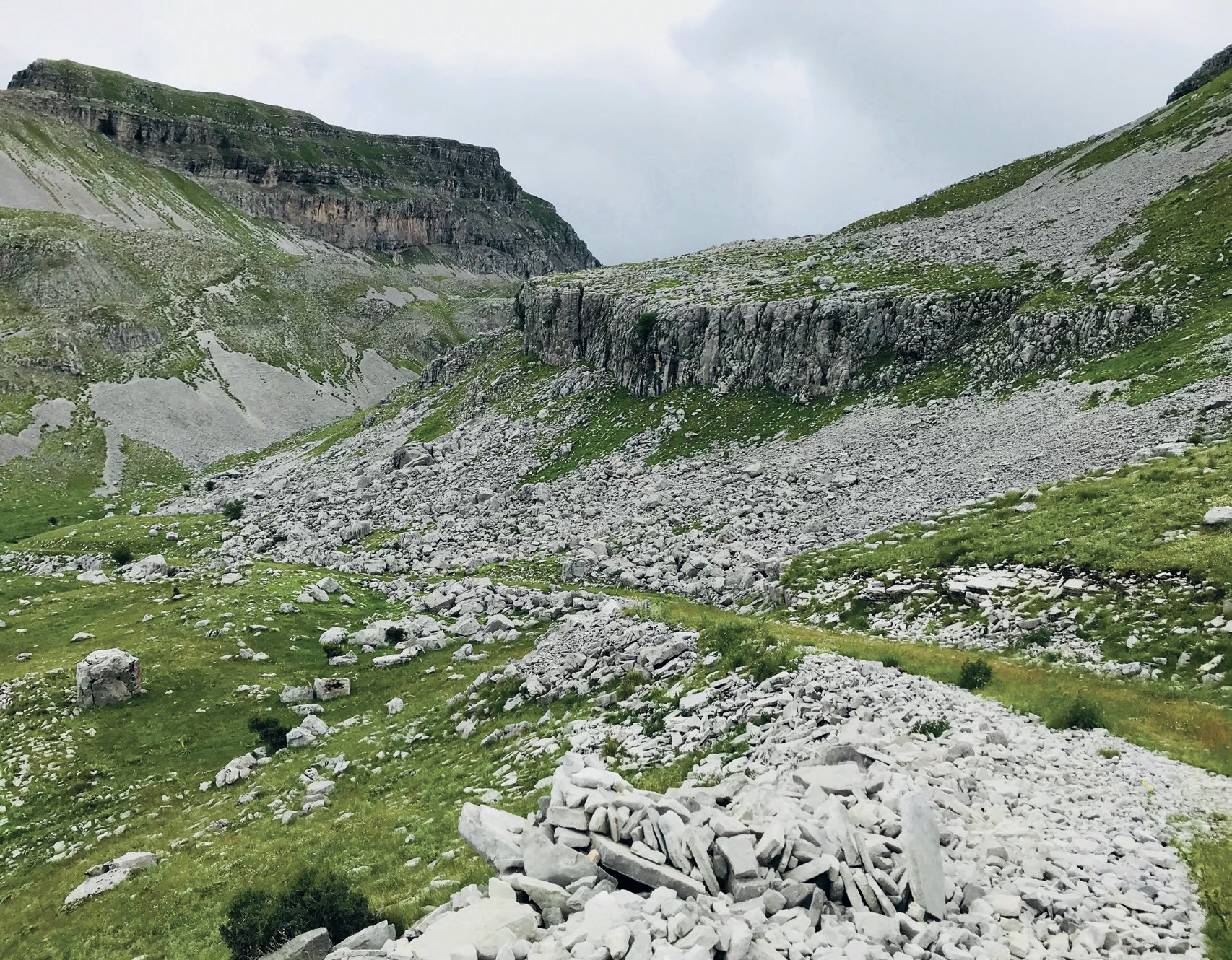
The term karst is primarily used to describe landscapes of limestone bedrock that are characterised by underground drainage and landforms created by solution of the rock.Rainwater dissolves limestone because the water is mildly acidic (carbonic acid) due to dissolved carbon dioxide collected from the atmosphere and from percolating through soils. Because limestone (CaCO3 ) is soluble and tends to be strongly bedded and jointed, water movement is concentrated in voids that become enlarged over time as the rock dissolves, and to a lesser extent by physical weathering. Over time, this secondary porosity in limestone allows large networks of passages and caverns to develop.
Karst landscapes have a distinctive set of processes and landforms. One measure of a well-developed karst landscape is that the volume of water, dissolved materials, and sediments transported below the surface exceeds that transported at the surface. Many karst landscapes in the middle and high latitudes (and in high mountains) have been glaciated and this brings together two distinctive process regimes.
Your organisation does not have access to this article.
Sign up today to give your students the edge they need to achieve their best grades with subject expertise
Subscribe




